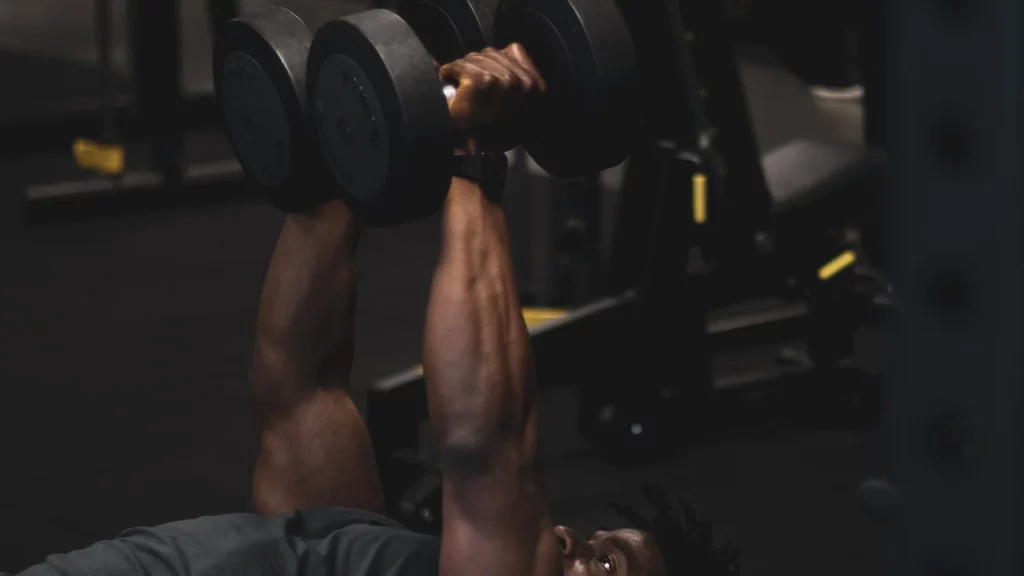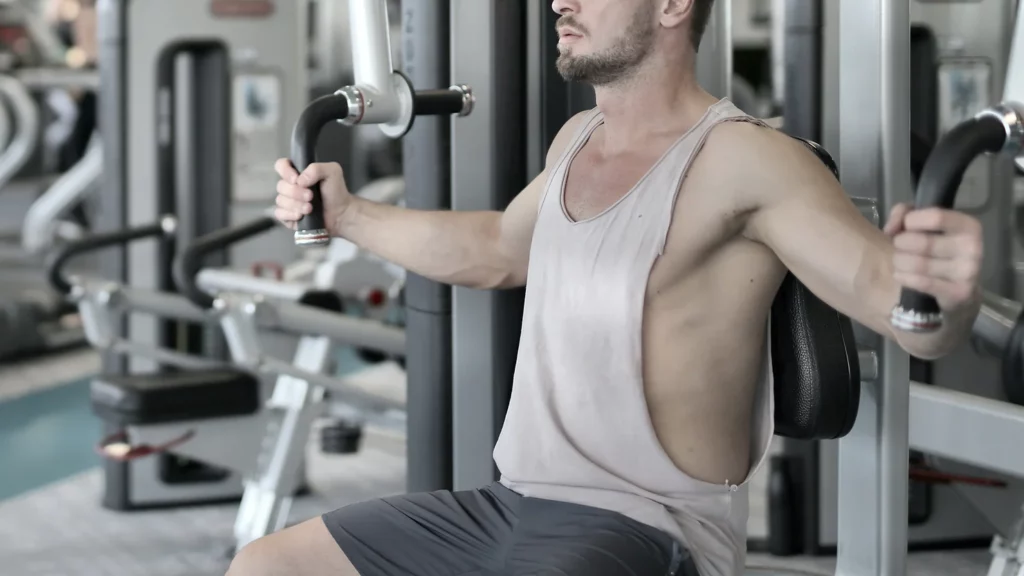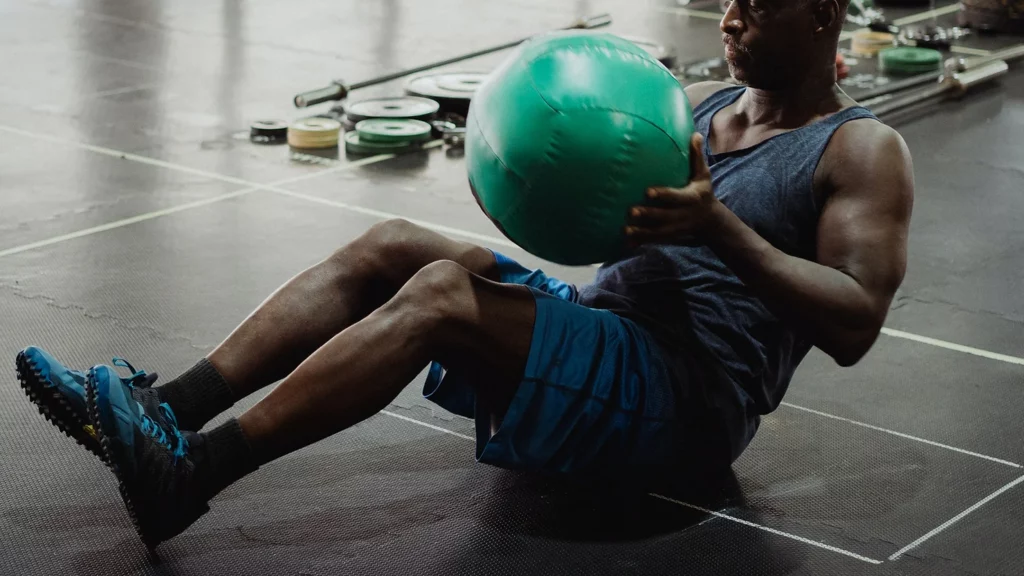What muscles do the chest fly work?
The chest fly primarily works the chest muscles, specifically the pectoralis major. This is a large muscle that covers the chest and is responsible for moving the arm across the body. The pectoralis minor, a smaller chest muscle, is also worked with this exercise. In addition, the front of the shoulder (anterior deltoid) and the biceps are also engaged when performing chest flys. All of these muscles work together to move the weight from outstretched arms toward the body.
One of the benefits of chest flys is that they can help you build a strong chest. A strong chest is important for daily activities such as pushing open a door or lifting a heavy object. The chest fly also helps with chest aesthetics, as a well-developed chest can make your upper body look more muscular.
How to perform the chest fly?
There are a few things you need to keep in mind when performing the chest fly. First, you will need a pair of dumbbells and a flat bench. You can also do this exercise with a stability ball, but we will focus first on the traditional version using a bench. To start, sit on the bench with your back against the pad and your feet flat on the ground. Pick up the dumbbells and hold them at arm’s length above your chest with your palms facing each other. This is your starting position. From here, slowly lower the dumbbells out to the sides of your chest while keeping a slight bend in your elbows. Continue lowering the weights until you feel a stretch in your chest muscles. Once you reach this point, pause for a moment and then raise the dumbbells back to the starting position. That is one rep. Repeat for the desired number of reps.
Common Mistakes
One of the most common mistakes people make when doing chest flys is using too much weight. It is important to use a weight that you can control throughout the entire range of motion. If you use too much weight, you will not be able to lower the dumbbells slowly and under control. This can lead to injury. Another mistake people make is not keeping a slight bend in the elbows throughout the exercise. This puts unnecessary stress on the elbow joint and can lead to pain. Finally, some people swing the dumbbells as they lower them down, which takes the focus off of the chest muscles. Remember to keep your chest up and your shoulders back as you lower the weight down to your sides.
Exercise Variations
Variation #1: Chest Fly with Cables
If you want to add a bit more challenge to your chest fly, you can try doing the exercise with cables. This variation allows you to keep constant tension on the chest muscles throughout the entire range of motion. To do this variation, you will need access to a cable machine. Set the pulleys at shoulder height and attach D-handles to each one. Pick up the handles and step forward so that you are in a split stance. From here, extend your arms out to the sides and lower the handles until you feel a stretch in your chest muscles. Pause for a moment and then press the handles back to the starting position.
Variation #2: Chest Fly with Resistance Bands
If you don’t have access to dumbbells or a cable machine, you can still do chest flys using a resistance band. This variation is great for beginners as it allows you to gradually increase the resistance as your muscles get stronger. To do this variation, anchor a band around a sturdy post and hold the other end with both hands in front of your chest. From here, extend your arms out to the sides and lower the band until you feel a stretch in your chest muscles. Pause for a moment and then press the band back to the starting position.
Variation #3: Chest Fly with a Medicine Ball
If you want to add a bit of weight to your chest fly, you can try doing the exercise with a medicine ball. This variation is great for intermediate and advanced lifters as it allows you to really challenge your chest muscles. To do this variation, sit on a bench with your back against the pad and your feet flat on the ground. Pick up the medicine ball and hold it at arm’s length above your chest with your palms facing each other. From here, slowly lower the ball out to the sides of your chest while keeping a slight bend in your elbows. Continue lowering the ball until you feel a stretch in your chest muscles. Once you reach this point, pause for a moment and then press the ball back to the starting position. That is one rep. Repeat for the desired number of reps.
Variation #4: Chest Fly with a Stability Ball
If you want to add a bit of core challenge to your chest fly, you can try doing the exercise with a stability ball. This variation is great for intermediate and advanced lifters as it forces you to engage your core muscles to stay balanced. To do this variation, sit on a stability ball with your feet flat on the ground and your back straight. Pick up a dumbbell in each hand and hold them at arm’s length above your chest with your palms facing each other. From here, slowly lower the dumbbells out to the sides of your chest while keeping a slight bend in your elbows. Continue lowering the dumbbells until you feel a stretch in your chest muscles. Once you reach this point, pause for a moment and then press the dumbbells back to the starting position. That is one rep. Repeat for the desired number of reps.
Summary
In conclusion, the chest fly is a great exercise for building chest muscle. There are many variations of the exercise that can be done to add challenge and variety. Be sure to avoid common mistakes such as swinging the dumbbells or lowering them too low to maintain proper form. Try incorporating some of the variations into your workout routine to keep your chest muscles guessing and growing!
Are you looking to get fit? Look no further! Our fitness programs are designed to help you build a strong and aesthetic physique. We also provide easy-to-follow routines that will fit any schedule. With our fitness programs, you'll have the tools you need to build muscle and achieve your fitness goals. Click the link below to get started!



